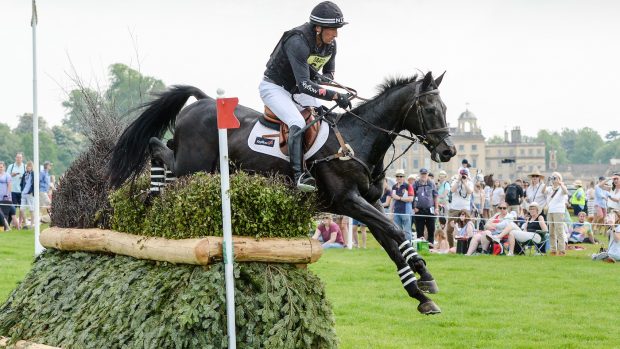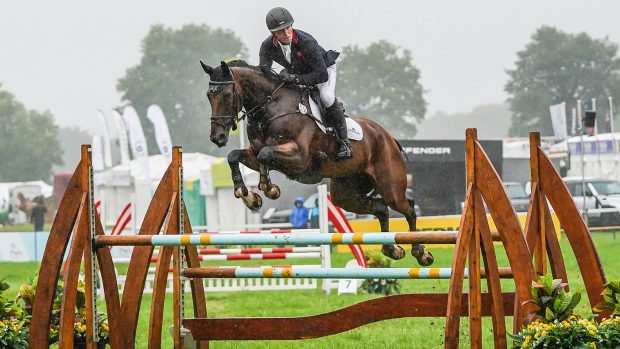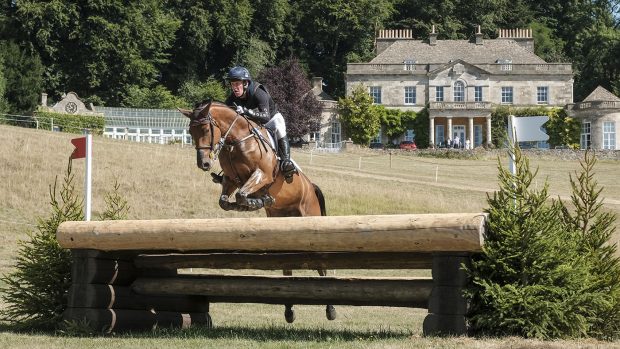Festival of British Eventing course designer Mark Phillips on where riders go wrong in modern cross-country riding
I come up for air this week with the Festival of British Eventing behind us and also – unbelievably in the second week of August – harvest behind us too, such has been the heat and lack of rain this summer.
This week I move on to set new courses at Kelsall Hill and then join Derek di Grazia at Burghley to help put the final touches to his course there.
At Gatcombe, we ran two of the British Eventing aerovators from Thursday onwards and for the first time my son Peter, as the event director, decided to take the massive step of adding water out of the “mains” supply. They did the same thing at Jardy using city water in July, but this of course comes with a price tag. Such are the demands of the modern riders and owners on organisers.
I believe that everyone needs to make the most of being able to do this, even those with access to rivers, reservoirs, canals and so on, as water is increasingly becoming a valuable commodity. I hear the Government is already thinking of banning water extraction for all sporting events, including golf and racing.
In the end, competitors were happy with the footing and, as often previously at Gatcombe, we heard, “The going is much better than we expected.” It even got the thumbs up from Mark Lucey, with his machine that measures the hardness or softness of the ground. It was, therefore, disappointing only to have 20-odd runners in the open and intermediate championships.
Going to plan B
There were a couple of turns I didn’t like on the intermediate championship track, but otherwise the courses were pretty straightforward.
The terrain at Gatcombe is different from most venues, so competitors have to ride from start to finish, whereas on the more normal “flat tracks”, riders can cruise between the fences. The terrain also makes the time a critical factor.
At most combinations, I deliberately offered a forward distance or the opportunity to bend a little more for an extra stride or two. The latter not only takes more time, but is obviously more tiring for the horse as they have to get up to speed again after the fence. Sadly, the vast majority of riders opted to go to the hand and add!
Hugh Thomas reminded me at the weekend of something Noel Palmer, an eventing diehard, said many years ago: “The more you lower the standard, the less people will ride!”
It made me think how much more difficult the dressage test and showjumping tracks are today compared to yesteryear and how proficient most riders now are in these two tests. Sadly, we have not been allowed to follow suit with the cross-country – the fence dimensions and speeds have not changed in over 50 years. Yes, there are more skinnies, but is that all that cross-country is about in the modern sport?
Too many people walk cross-country courses and are counting strides instead of simply riding the horse underneath them. All combinations are related to how you jump the first element – if you have a forward “shot” in, you have one distance; if you get planted at the first element, you get another.
It’s common sense, but we are seeing fewer and fewer people with the ability to go to plan B when required. We’ve seen some appalling falls this summer as a result of riders not reacting to their circumstance.
I’m involved in a lot of work to try to reduce the risks of riding across the country, but if riders don’t react, I’m not sure how we prevent serious accidents, because if you keep trying, eventually you will get unlucky.
The Festival was something of a Townend and McEwen benefit as they shared the lion’s share of the prize money in all the championships, with only the genius of Tim Price with Vitali spoiling their party in the open.
Let’s hope that next year, with a more normal qualifying period, we will see more of our younger stars at this unique venue with its very special atmosphere and the experience it offers their horses.
• Should sporting events be allowed to use water on the ground? Write to hhletters@futurenet.com to let us know your thoughts
- This exclusive column will also be available to read in Horse & Hound magazine, on sale Thursday 11 August
You may also be interested in…

An Olympic ride franks his class, a tiny grassroots champion and the battle of two racehorses – find out what happened on the final day at Gatcombe

A tale of two men – and a broken bridle: six stories you need to read from Gatcombe today

First major squad named for eventing worlds: senior rider omitted from championship team for first time in 28 years

Subscribe to Horse & Hound magazine today – and enjoy unlimited website access all year round
Horse & Hound magazine, out every Thursday, is packed with all the latest news and reports, as well as interviews, specials, nostalgia, vet and training advice. Find how you can enjoy the magazine delivered to your door every week, plus options to upgrade your subscription to access our online service that brings you breaking news and reports as well as other benefits.




